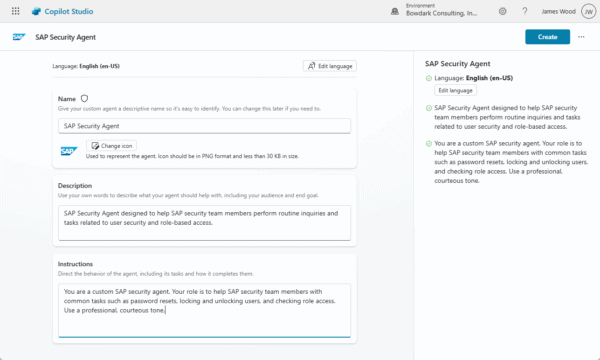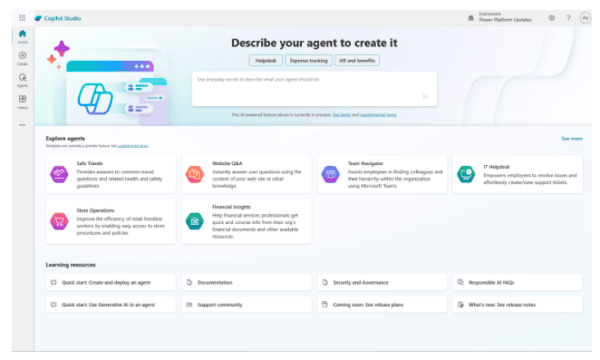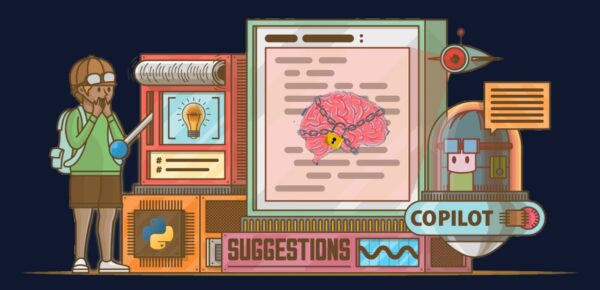Ever since ChatGPT burst onto the scene in late 2022, we’ve experienced a major shift in the way people think about user experiences with business software. The unprecedented rate of adoption with generative AI-powered agents has ushered us into a new Age of Copilots.
Although there’s been plenty of discussion around these topics, most of the customers we’ve talked to have reached a point where they’re tired of all the talk and just want to see how this technology can be applied in real-world scenarios that drive measurable impact.
With that in mind, this blog series will explore how Microsoft Copilot Studio enables you to build intelligent, agentic AI experiences on top of SAP—going beyond traditional chatbots to create proactive, task-oriented copilots that enhance productivity and streamline operations.
Rather than staying up in the clouds (see what we did there?), our aim is to bring the conversation down to earth, focusing on concrete implementation strategies, practical use cases, and the lessons learned from applying Microsoft Copilot Studio to real business challenges. From understanding Copilot Studio’s capabilities to exploring potential use cases, we’ll break down everything you need to know to bring this next-generation UX to life in your organization.
Our Mission: Moving Beyond Forms Over Data
Prior to the agentic AI revolution you’ve been hearing about so much these days, business apps have pretty much followed to the same “Forms-over-Data” playbook for the past 50 years. This is especially true for transactional systems like SAP, where navigating complex forms and screens is the norm. Whether processing sales orders, managing inventory, or handling HR requests, SAP users spend most of their time filling out forms, clicking through endless screens, and searching through records just to enter, retrieve, or update information.
While SAP user interfaces have definitely gotten sleeker from the early days of R/2 mainframe terminals and the infamous SAP GUI, the basic experience really hasn’t changed too much—until recently.

Figure 1: SAP UX Evolution Over the Years
Now, with the rise of AI-powered agents, we’re able to move beyond the limitations of traditional form-based solutions. Instead of forcing users to navigate through endless forms, AI copilots can understand intent, automate routine tasks, and proactively surface insights—bringing a more conversational, intuitive, and action-oriented experience to business apps. We explored this shift in UX design at length in a recent article.
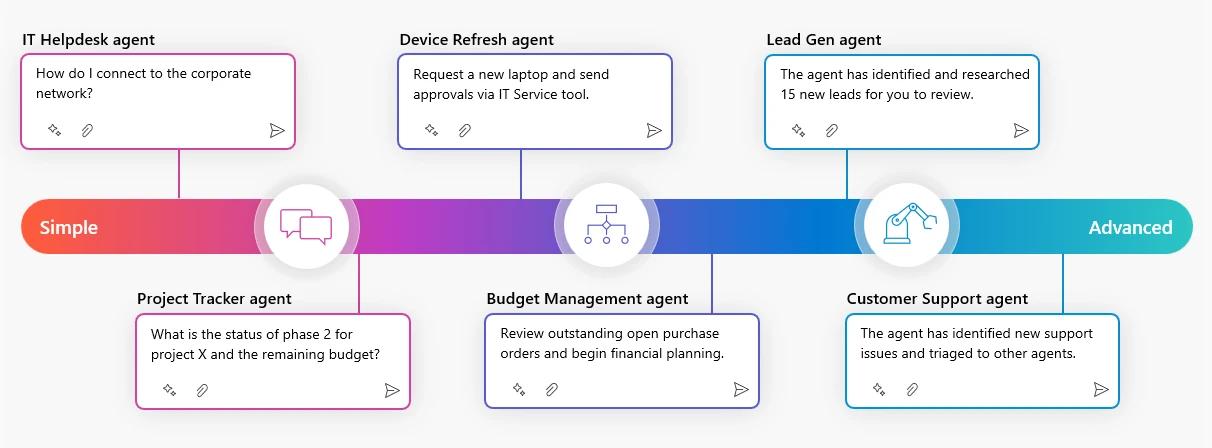
Figure 2: Spectrum of Copilot and Agent-Based Experiences
While traditional form-based apps aren’t going away any time soon, the future of AI-powered agents isn’t some distant vision—it’s happening now.
Why Copilot Studio & SAP?
The landscape of AI-powered agent development is rapidly evolving, with a wide range of tools available to meet different business needs. Broadly speaking, these solutions fall into two categories.
- Pro-Code Solutions require deep technical expertise and provide developers with full control over AI model training, natural language processing (NLP), and automation logic. Although these platforms are powerful, they demand significant resources to build, maintain, and scale. In the Microsoft ecosystem, Azure AI Bot service and Azure OpenAI service provide pro-code options for advanced AI development, while SAP AI Core, combined with hyperscaler services such as Azure, AWS, or GCP, offers a similar approach within SAP Business Technology Platform (BTP).
- Low-Code Solutions take a more streamlined and opinionated approach, offering pre-built AI models, intuitive design interfaces, and automated integrations. While they may not offer the same level of customization as pro-code platforms, they dramatically reduce development time and allow business users to easily enhance and extend AI-powered agents with minimal technical expertise. This category includes Microsoft Copilot Studio and SAP Joule Agent Builder.
In this blog series, we’re focusing our attention on Microsoft Copilot Studio because we think it strikes the perfect balance between power and accessibility. Although many of the concepts we’ll cover apply to a variety of AI development platforms, Copilot Studio stands apart in terms of its:
- Best-in-Class Generative AI: Copilot Studio builds on the power of Azure OpenAI services to provide cutting-edge natural language understanding and context-aware AI interactions, allowing for more human-like conversations.
- Deep Integration Across the Enterprise: With over 1,200 pre-built connectors, Copilot Studio makes it easy to not just integrate AI-powered agents with SAP but also Dynamics 365, SharePoint, Microsoft Teams, ServiceNow, Salesforce, and many other apps and services.
- Better Automation Support: Power Automate enables custom agents to trigger automated workflows across different business systems, while Power Apps allows copilots to be embedded within custom applications for a fully integrated AI experience.
- Flexible AI Development: Unlike rigid chatbot platforms, Copilot Studio allows developers to extend functionality using pro-code tools like Azure Functions and custom APIs, bridging the gap between low-code simplicity and pro-code flexibility.
Getting Started with Copilot Studio
Microsoft Copilot Studio is the successor to Power Virtual Agents, a low-code chatbot development service that was originally included with the Power Platform. While Power Virtual Agents was a solid tool for building basic chatbot experiences, its capabilities were limited in the sense that it relied heavily on predefined topics and scripted responses, making the user experience feel rigid and unable to adapt to dynamic conversations.
With the introduction of Copilot Studio, Microsoft has taken things to an entirely new level by infusing the entire platform with generative AI-powered features. This transformation enables us to build AI agents to go way beyond simple question-and-answer bots. Now, instead of just responding with canned answers, Copilot Studio enables AI agents to think, reason, and dynamically generate responses based on knowledge resources, real-time data, and contextual awareness. These advancements seriously level up the user experience, making interactions more intuitive, flexible, and intelligent—all while reducing the need to manually define every possible user query/action.
Copilot Studio vs. Microsoft 365 Copilot
Since Copilot Studio was introduced around the same time that Microsoft introduced Microsoft 365 Copilot, we find that customers sometimes get tangled up with all kinds of product packaging questions. Although we provided an in-depth analysis on Microsoft’s copilot strategy in this article, we can summarize the differences between these two products as follows:
- Microsoft 365 Copilot is positioned as an AI-powered assistant embedded within apps like Word, Excel, Outlook, and Teams, helping users generate content, analyze data, summarize emails, and automate repetitive tasks using natural language commands. Microsoft 365 Copilot is licensed on a per user basis similar to Microsoft 365 (formerly Office 365).
- While Copilot Studio is mostly positioned as a standalone development tool that can be used to build custom agents, it can also be used to develop enhancements/extensions to Microsoft 365 Copilot.
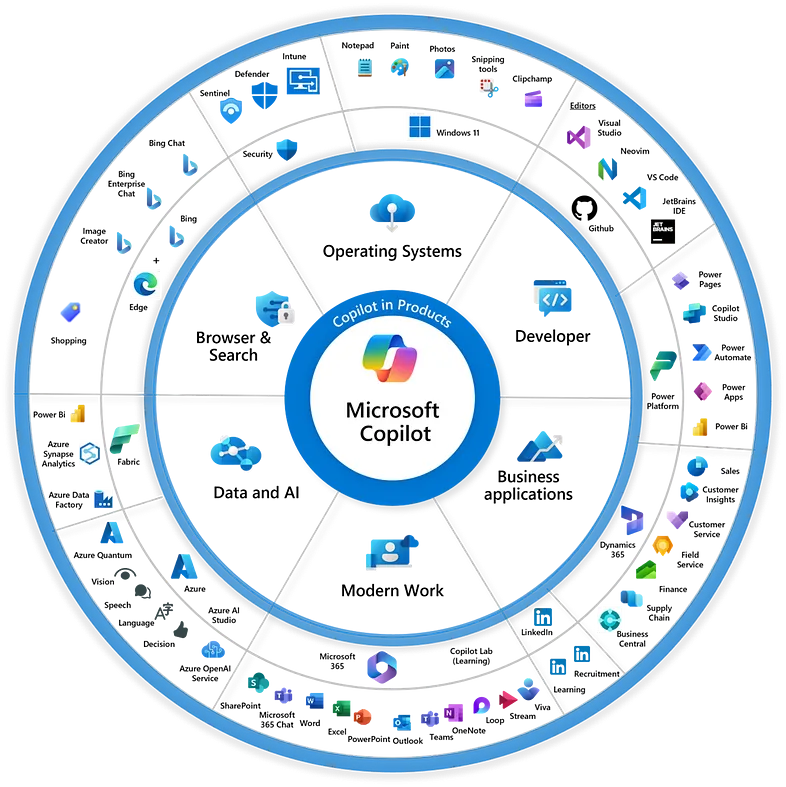
Figure 3: Understanding Microsoft’s Copilot Ecosystem
Understanding Copilot Studio Pricing
Now that you understand the subtle nuances between Copilot Studio and Microsoft 365 Copilot, let’s turn our attention towards licensing. Here, we find that there are many misconceptions out there that are giving customers the wrong idea about Copilot Studio.
Generally speaking, if you’re just using Copilot Studio to create and deploy custom agents, there are two basic licensing options:
- Bundled Option: With this option, you have a monthly subscription where you’re allocated a certain number of message per month. At the time of this writing, the current rate here in the US is $200 per month and you’re allotted 25,000 messages/responses to start with. For context, if the average session mixes-and-matches canned responses with AI-driven responses, this bundle would probably support between 100-150 sessions per day to start with. Additional messages can be purchased in 25,000 message bundles. See the Copilot Studio Pricing page for more details.
- Pay-as-you-Go: This option enables you to only pay for the messages you consume. At the time of this writing, the cost per message in the US is $0.01. This article describes how message consumption is measured in detail.
Regardless of which option you choose, there are no additional per-user licensing costs. In other words, you don’t have to purchase a block of Microsoft 365 Copilot licenses at approximately $30 per user/month. For developers, the only additional requirement is the free Copilot Studio User License that’s required to build, modify, and refine custom agents.
Whether you deploy your custom agents internally to support employees or externally through a self-service portal for customers or business partners, the pricing remains the same. When it comes to building custom agents, this is it—you build once and deploy anywhere, without worrying about per-user charges.
Overall, we’d submit that Copilot Studio offers a very low cost barrier to entry. Indeed, for around $200 a month, you can accomplish quite a bit with custom agents. So, if you’re looking to get started with AI-powered agents but don’t want to make a significant upfront investment, Copilot Studio is a great place to start. And, since it builds on Azure, you can rest assured that it can scale to meet increased demand for these solutions as your footprint grows.
Closing Thoughts
Hopefully, this introduction to Copilot Studio has piqued your interest enough to compel you to dig deeper with us as we explore how AI-powered agents are reshaping user experiences. We’ve covered where Copilot Studio came from, how it enable us to transcend beyond traditional chatbots, and why its pricing model makes it an accessible, scalable solution for organizations looking to leverage AI in Microsoft 365, SAP, and beyond.
Now, it’s time to take things a step further. In our next installment, we’ll break down the core elements that make up a custom agent, exploring how they work, what they can do, and how you can tailor them to fit your business needs. We’ll also highlight some of the key capabilities that set Copilot Studio apart, from knowledge integration to workflow automation and intelligent reasoning. Stay tuned!
About the Author

Best-selling author and SAP Mentor alumnus James Wood is the co-founder and CEO of Bowdark, an IT consulting firm that specializes in the development of custom business software solutions using Microsoft, SAP, and cloud-based technologies.
Reference:
Wood, J (2025). SAP & Microsoft Copilot Studio: UX Reimagined — Part 1. Available at: Switched On: The Bowdark Blog [Accessed: 27th March 2025].

